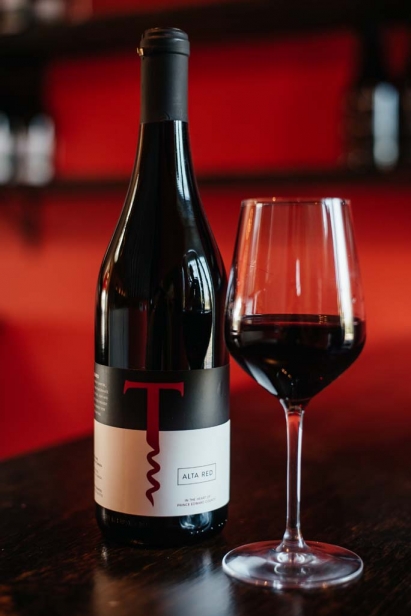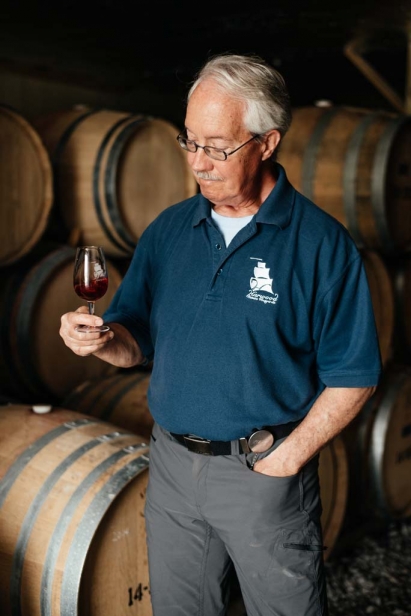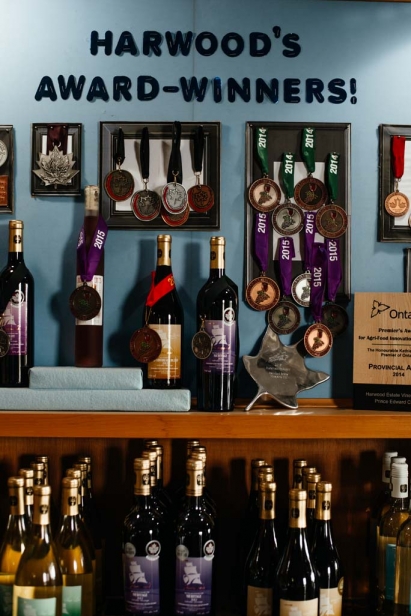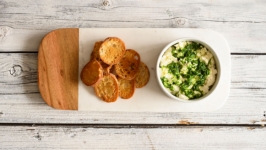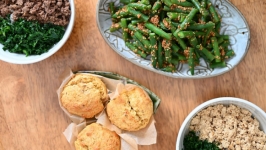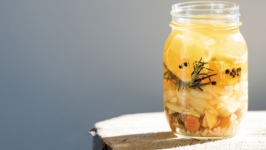Following the Grape
Grapes, to be honest, are the trickiest of customers.
They are affected by the slightest change in temperature and humidity. They’re more susceptible to disease than a toddler in daycare. They’re picky about the soil in which they’re planted, and if you leave them just a little bit too long on the vine, or pick them a little too early, your wine will suffer the consequences.
Throw in the challenge of growing grapes in a marginal climate, such as the one found in Prince Edward County, and you’ve got a real struggle on your hands. Many of the traditional French grapes such as Chardonnay, Sauvignon Blanc and Pinot Noir need special attention during Ontario winters. Their lower branches need to be buried during the harsh months to protect them from the worst of the cold, ice and snow. This is messy, time consuming, expensive and not always effective.
But there is a grape, a Minnesota-bred hybrid, which appears to be making winemaking just a little easier for those in a cold climate. The Marquette hybrid is one of several developed at the University of Minnesota. Named after a Jesuit missionary and 17th-century North American explorer, Père Marquette, the grape is described as a grandson of the Pinot Noir grape and a cousin of Frontenac. And it’s a grape with a growing following across the marginal growing regions of Canada and from Vermont to Minnesota in the U.S.
Mike Traynor, owner and winemaker at Traynor Family Vineyard in Prince Edward County is a big fan and one of very few people using the grape to make table wines. Several other local wineries use Marquette to make port-style wines; more on that later.
Traynor is a small vineyard, covering just five and a half acres. Of that, one acre is devoted to the Marquette grape. It’s a distant relation of the French Pinot Noir grape, but after several generations of hybridizing, it’s hardy to minus 30 degrees, is disease resistant and ripens well in our northern climate. It can produce a high alcohol, high sugar level wine, reminiscent of port, if left long on the vine. But it can also produce a lower sugar, higher acidity wine, more suitable for the blended Alta Red produced by Traynor. “It’s like ink, it has an earthiness and a smokiness to it,” Traynor says, “and it’s good blended with Frontenac Gris, which is fruity and lacks body and tannin.” In 2015, Traynor’s blend, which is 40 per cent Marquette, won a silver medal at the National Wine Awards of Canada.
All of the wines that Mike Traynor makes have won awards. This is an impressive statistic given that he only bought the land in 2008 and has literally built the winery with the support of family and friends. At one point, his parents were balanced on scaffolding screwing bolts into the shiny, silver roof.
While the vineyard may be a new operation, Traynor has wine running in his veins. He’d written his first business plan for a vineyard by the age of 19, has completed the Algonquin College sommelier course and has worked in restaurants in Ottawa, as operations manager at Huff Estates and as a wine consultant ever since. He is chair of the Prince Edward County Winegrowers Association.
Soon after his purchase, Traynor went on an eating and drinking tour of New Zealand. He realized that the soil and climate in which many award-winning Marlborough Sauvignon Blanc vines thrive are similar to that of his corner of Prince Edward County. “In Marlborough, it’s consistently windy, which keeps it fresh,” he explains. “And they pick on flavour and acidity and don’t let the grapes over-ripen. So now, I’m picking in mid-September, not mid-October.” The result is an award-winning Sauvignon Blanc with vibrant acidity.
Now producing 550 cases annually, Traynor is hoping to crack the 1,000 mark in the not-too-distant future. “I don’t want to be massive, I just want to be really good,” he says.
Hardly a stone’s throw away at Harwood Estate Vineyards, John Rode, a partner and associate winemaker, uses the Marquette to make a port-style wine. “It can ripen to a level of 28 brix — a measurement of latent sugar. By comparison, a Pinot Noir may get to 21 or 22,” he explains, “and gives flavours of spiced raisins, dried figs and prunes.”
Rode makes about 500 bottles annually of his Marquesa, which is aged for 18 months in a combination of American, French and Canadian oak barrels. “The only drawback to the Marquette is that it is thin-skinned like a Pinot Noir grape, so bursts easily with frost. This takes a bit of extra care and means we must look at the vines daily. And, it’s not a terribly vigorous vine, but putting it onto North American root stock might improve this.”
Just down the road at Karlo Estates, Sherry Karlo, owner and vintner, produces about 500 cases of Van Alstine port-style wine, made from estate-grown Marquette and Frontenac Noir grapes, picked in mid- to late-November. Named after Peter Van Alstine, a major in the Loyalist army and the first owner of the nearby Glenora ferry, this port was billed as one of the top-10 cutting-edge wines in the world at the Gourmet Food and Wine Show in 2010. It sells out every year. “It’s become a cult wine with a following for us,” Karlo says. “We have waiting lists for people who want to buy it.”
Karlo’s late husband Richard, known for his exceptional palate, championed many early hybrid varieties, including the Marquette. Now Karlo likes the Marquette for its hardiness, which makes it less expensive to grow, she explains. “We can then pass on these savings to clients.” But the drawback is that it cannot be VQA-certified like other Karlo Estates wines because the grape is not recognized by the VQA, which means the wine can only be sold at the farm gate, not through stores. “I think it’s time the VQA re-assess the hybrids they recognize,” she says.
Back at Harwood, Rode agrees, but there’s hope for change because one of the larger grapevine-producing nurseries has been taking cuttings from his Marquette vines to produce more stock to satisfy demand. “Once the larger players get into this, there will be some hope for change,” he explains.
In the meantime, back at Traynor Family Vineyard, where solar panels provide power and Tesla electric car-charging stations meet visitors at the door to the tasting room, Traynor’s eye is clearly on the future. “I think Marquette should be an approved variety,” he says, “but I’m here to make the very best out of what I’ve got.”
Harwood Estates Vineyards
18908 Loyalist Parkway, Hillier, Ont.
harwoodestatevineyards.com, 613.399.1631
Karlo Estates
561 Danforth Rd., Wellington, Ont.
karloestates.com, 613.399.3000
Traynor Family Vineyard
1774 Danforth Rd., Hillier, Ont.
traynorvineyard.com, 1.877.403.4224




